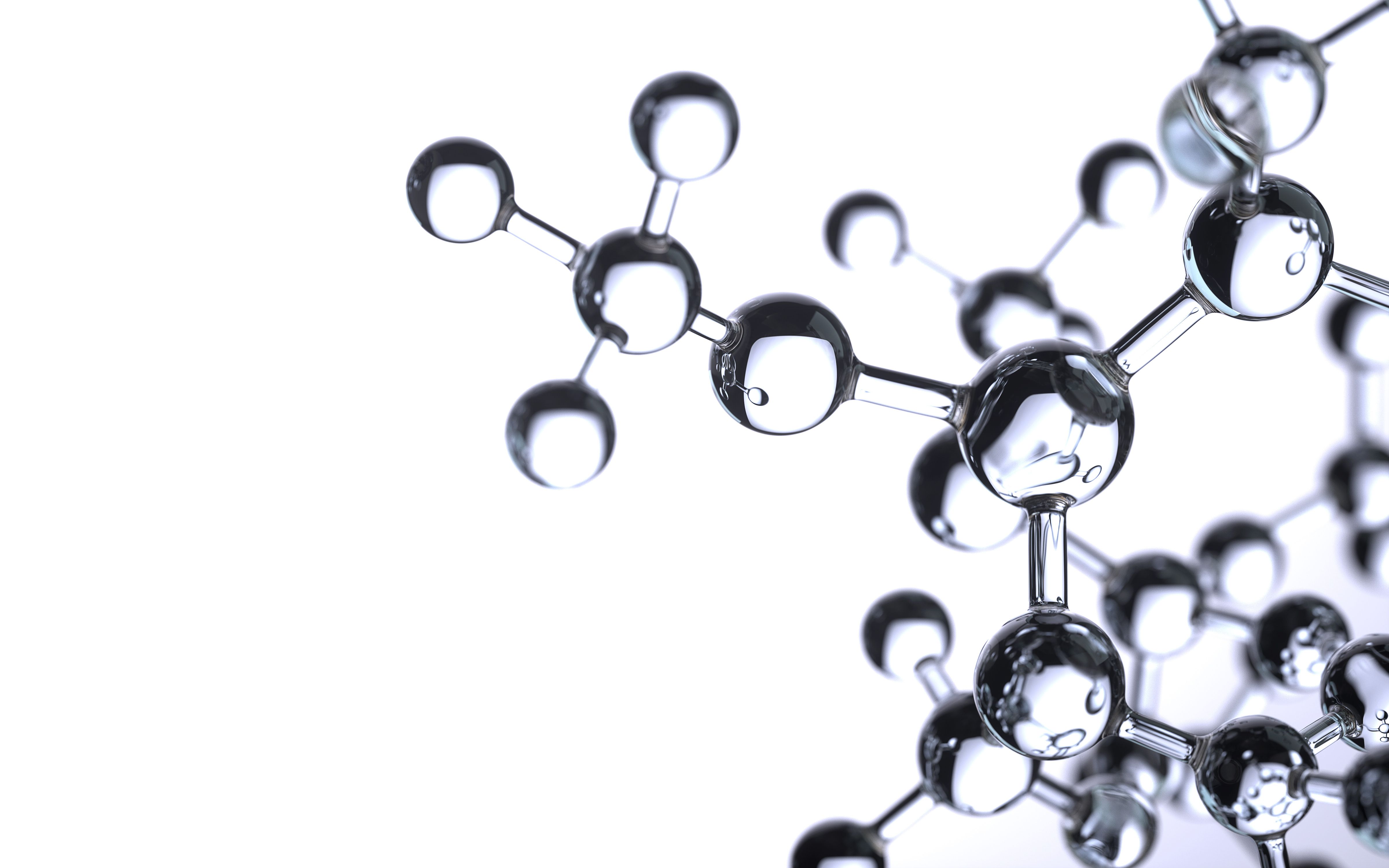Scientists Test a New Process for Small Molecule Structure Elucidation
Scientists from the agricultural chemical company Corteva Agriscience in Indianapolis, IN, are testing the effectiveness of hydrogen/deuterium exchange mass spectrometry in separating and quantifying small molecule structure elucidation (1). Their most recent findings were published in the journal Chromatographia (1).
molecule model. Science concept. 3d rendering, conceptual image. | Image Credit: © Shuo - stock.adobe.com

Structure elucidation of small molecule impurities and metabolites can be acomplex process. Two popular techniques used for this process are high resolution and tandem mass spectrometry (MS). Tandem mass spectrometry provides fragment ions information of an ionized molecule, which pairs well with high resolution MS, since that practice can provide accurate mass measurements to the third or fourth decimal point of mass to charge ratio (m/z).
However, one of the challenges researchers experience when using high resolution and tandem mass spectrometry is that it is difficult to propose definitive structures for isomers solely based on mass spectrometry data. The scientists from Corteva showed how hydrogen/deuterium (H/D) exchange mass spectrometry can be effective in helping to identify exchangeable hydrogen atoms on heteroatomic functional groups, and how many there are at a time. This practice has already been in widespread use for both small molecule and large biomolecule experiments for structure elucidation, kinetics, conformation. According to Chengli Zu, who works as part of the Predictive Safety Center for Corteva Agriscience, one of the scientists behind this experiment, "Our experiment took advantage of the configuration by conducting a generic separation in the first dimension, followed by H/D exchange in the second dimension, and finally analyzed by a mass spectrometer. It has a few advantages as compared to other methods, for example, non-mass spectrometry compatible solvent can be used in the first dimension, less D2O solvent is consumed, complete H/D exchange can be realized in the second dimension."
The study uses this exchange technique alongside two-dimensional liquid chromatography–mass spectrometry (2D-LC–MS) for unknown impurity and metabolite structure elucidation. A mixture of isomeric compounds was separated in the first dimension, then transferred into the second dimension using a heart-cutting valve. From there, the hydrogen/deuterium exchange was carried out, with deuterium oxide being used as one of the mobile phase solvents. Afterwards, the eluents were analyzed, with the results showing three major phenomena: quick and complete conversion of H/D exchange in the second dimension, prompt detection of deuterated analytes with mass spectrometry, and clear shifts of m/z values for each compound with mass spectrometry.
“The application of two-dimensional liquid chromatography mass spectrometry for hydrogen/deuterium exchange experiments provides unique advantages of simplicity along with minimized time and resources,” the scientists wrote in the study (1).
Reference
(1) Johnson, J. T.; Patil, R. A.; Zu, C. Two-Dimensional Liquid Chromatography–Mass Spectrometry: Heart-Cutting Hydrogen/Deuterium Exchange as a Tool for Small Molecule Structure Elucidation. Chromatographia 86, 535–540 (2023). DOI: 10.1007/s10337-023-04265-0
University of Rouen-Normandy Scientists Explore Eco-Friendly Sampling Approach for GC-HRMS
April 17th 2025Root exudates—substances secreted by living plant roots—are challenging to sample, as they are typically extracted using artificial devices and can vary widely in both quantity and composition across plant species.
Common Challenges in Nitrosamine Analysis: An LCGC International Peer Exchange
April 15th 2025A recent roundtable discussion featuring Aloka Srinivasan of Raaha, Mayank Bhanti of the United States Pharmacopeia (USP), and Amber Burch of Purisys discussed the challenges surrounding nitrosamine analysis in pharmaceuticals.






